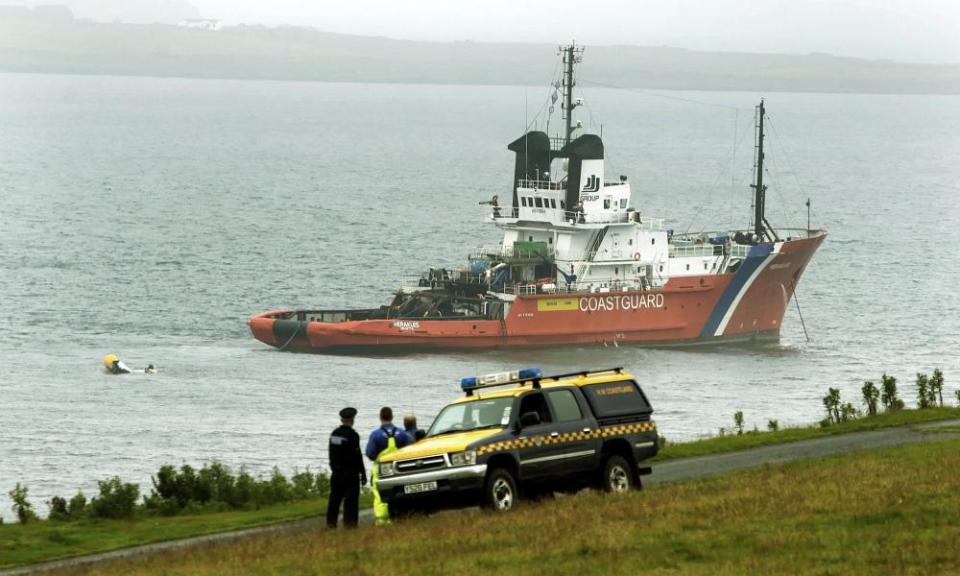Inquiry blames pilot error for fatal Shetland helicopter crash

The pilots were to blame for an offshore helicopter crashing into the sea off the coast of Shetland, killing four passengers, an inquiry has found.
The fatal accident inquiry found that the crew of the Super Puma helicopter failed to maintain the correct air speed as they approached Sumburgh airport in August 2013, leading to it ditching into the sea.
The helicopter, carrying 18 people, capsized a few hundred metres from the coast, leading to a rescue operation involving the RNLI, coastguard, RAF and police.
Three passengers – Duncan Munro, 46, from Bishop Auckland; Sarah Darnley, 45, from Elgin; and George Allison, 57, from Winchester – drowned at the scene. A fourth, Gary McCrossan, 59, from Inverness, had a cardiac arrest in a life raft.
The inquiry heard that a fifth passenger, Sam Bull, took his own life four years later, aged 28, after suffering from post-traumatic stress disorder (PTSD) following the crash.

The sheriff principal Derek Pyle, who led the inquiry in Inverness, said: “This was a dreadful accident with long-term repercussions for the survivors and the families of the deceased which no determination by this court can properly describe.
“I do hope that it has at least assisted in an understanding of what occurred, the reasons for it, and what has been done to ensure so far as practicable that such an accident does not occur again. My condolences go, in particular, to the families of the deceased, including, lest it be forgotten, the family of Mr Bull.”
Survivors told investigators that it seemed like the helicopter suddenly lost power. It had been returning from the Borgsten Dolphin oil platform.
The aircraft’s pilot was Martin Miglans, and his co-pilot was Alan Bell. Pyle said Miglans had a first-class record flying helicopters, but for reasons that remained unexplained, his failure to keep the helicopter at the right speed on its approach contributed to a “perfect storm of circumstances”.
“Plainly there was no neglect,” Pyle said, but he added: “The flight crew of the helicopter failed to maintain the target approach airspeed and the stabilised approach criteria contained in the operator’s operations manual during the latter stages of the non-precision approach to Sumburgh airport.
“This was due to the flight crew not effectively monitoring the helicopter’s flight instruments, thereby allowing the helicopter to enter a critically low energy state resulting in the loss of control of the aircraft.”

